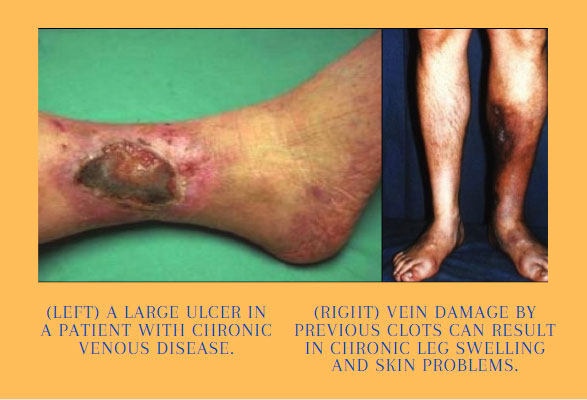Deep vein thrombosis (DVT) is a serious medical condition when a blood clot, or thrombus, forms in the veins deep inside your body, typically the legs. Deep vein thrombosis is common with more than 200,000 cases in the US occurring each year. DVT can result in the legs becoming very swollen and painful. And sometimes, when not treated properly, the blood clots can dislodge and travel to the lungs, what is known as a pulmonary embolism (PE). This condition may be life-threatening and can cause patients to become very ill.
Risk factors of Deep VeinThrombosis (DVT) include:
- Immobilization (prolonged sitting)
- Oral contraceptive pills (birth control)
- Smoking
- Obesity
- Family history of clotting disorders
- Recent major surgery
- Recent trauma
- Cancer
ANTICOAGULATION
Treatment for DVTis anticoagulation, blood thinner medicines that prevent blood clots. These include heparinoids (injectable blood-thinners), Warfarin or novel oral anticoagulants (NOACs), such as Xarelto and Eliquis. Patients may be on blood thinners for several months or longer and over this time, the blood clots may dissolve.
INTERVENTIONAL RADIOLOGY TREATMENTS
In severe cases of DVT, blood thinners alone may not help patients feel better. Despite blood thinners, patient may still have severe pain and swelling in the legs. For these patients, Interventional Raddiologists can use a tiny catheter to inject “clot-busting” drugs to rapidly dissolve the clots from the leg or can use small devices to suck out or remove the clots. This is all done through a tiny hole in the skin. No surgery is needed. These minimally invasive procedures are well tolerated with minimal pain and few complications.

CHRONIC DVT
In some cases, DVT in the legs can cause long-lasting damage to the veins, resulting in scarring or malfunctioning of one-way valves in the veins. There are several cases where the damage is known to cause chronic (permanent) leg swelling, pain, skin changes and wounds. This is called Post Thrombotic Syndrome or PTS. In some situations, Interventional Radiologists can perform minimally invasive procedures to open up scarred veins and promote better blood flow.




